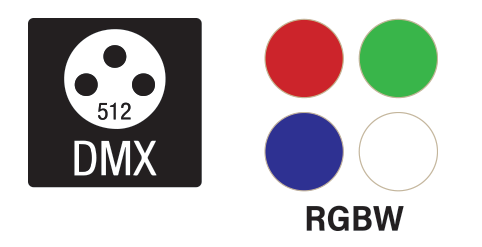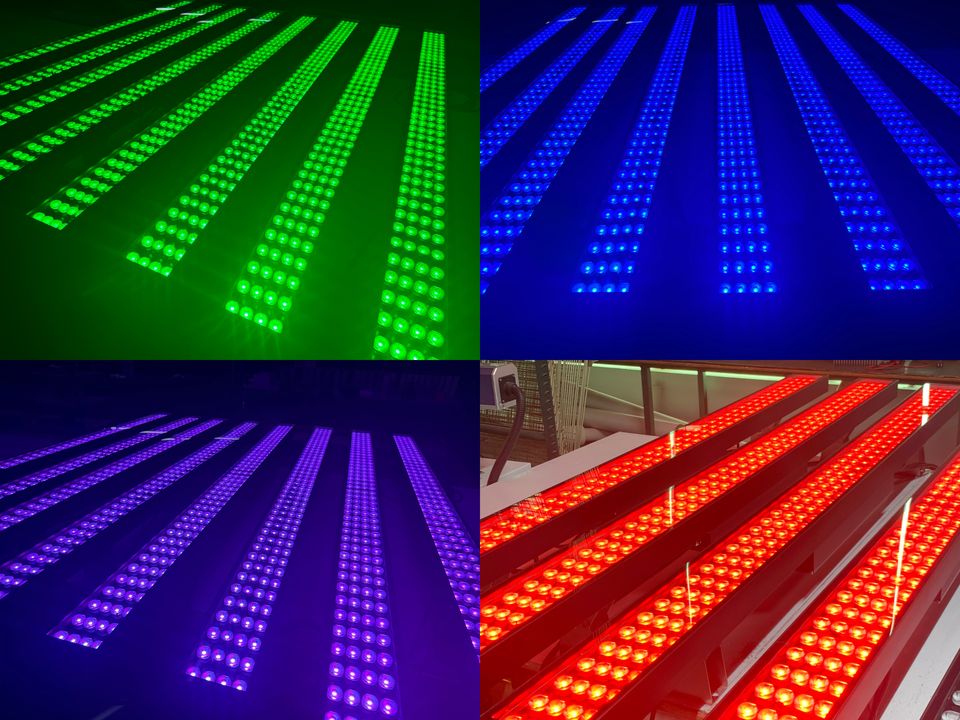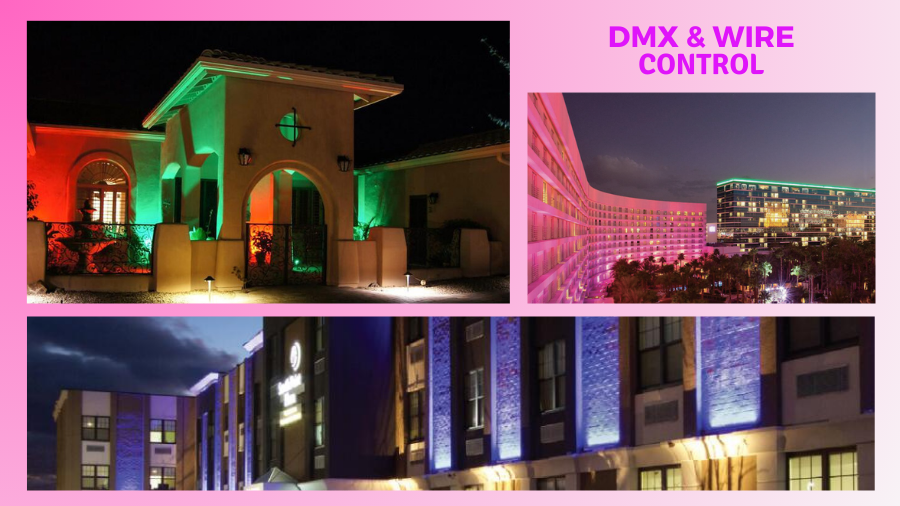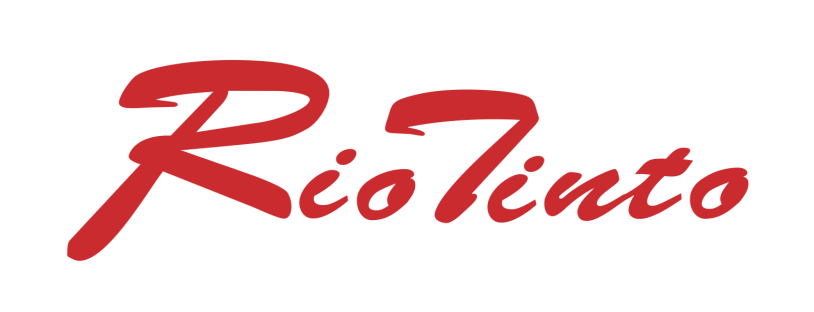The Original Manufacturer Of LED lighting
 RioTinto
RioTinto  2025-12-05
2025-12-05
DMX (Digital Multiplex) is a protocol used to control devices such as lights or fog machines. DMX512 is a standard for digital communication networks(protocol) that are widely used in lighting systems to control multiple fixtures and effects with precision. It's essential for stage, architectural, and entertainment lighting, offering unmatched flexibility and reliability.
It lets you control multiple lighting fixtures or devices down a single data line. It's a widely adopted standard in the lighting industry because of how reliable and flexible it is.
The signal is unidirectional, meaning it only travels in one direction; from the controller or first light, all the way to the last. In its most basic form, DMX is just a protocol for lights, like how MIDI is for keyboards or DAW controllers. To understand what DMX consists of, you need to know about DMX fixture, DMX channels, DMX address and DMX controllers.

In the grand theater of light, where artistry meets technology, the DMX fixture emerges as a pivotal player, orchestrating visual symphonies that captivate and enthrall. But what exactly is this enigmatic device, and why has it become the lingua franca of professional lighting environments?
At its heart, a DMX fixture is a lighting device designed to communicate using the DMX (Digital Multiplex) protocol. Envision each fixture as a responsive instrument in a vast orchestra, each assigned its unique set of instructions. In essence, a DMX fixture is a light—or a carefully grouped ensemble of lights—assigned to one or more channels, each awaiting the conductor's cue to perform.
These fixtures are the luminaries of choice in professional settings, from the electrifying spectacle of stage productions and concerts to the subtle elegance of architectural lighting and the vibrant energy of event illumination. Imagine a concert hall bathed in a kaleidoscope of colors, each hue meticulously controlled to evoke a specific emotion. Or picture a theater where the lighting seamlessly transitions, guiding the audience through a narrative woven in light and shadow. This is the artistry that DMX fixtures enable.
You connect a DMX fixture to a DMX controller, and then you can program it to do things like adjust the brightness, color, movement.
Each DMX fixture is assigned a unique DMX address, its digital identity in the lighting network. This address acts as its personal call sign, ensuring it responds only to the signals intended for it. Think of it as the fixture's private line to the controller, allowing for precise and targeted control. You might encounter simple devices, such as single-color LED lights, content to emit a steady, unwavering glow. Or, you might encounter complex moving-head lights, equipped with a dizzying array of controllable features, and a host of captivating effects.
The ability to link multiple fixtures together and control them all in sync is what makes DMX fixtures so powerful and awesome.

DMX channels
DMX Channel: An individual control channel with a range of values from 0 – 255 that correspond to 0 – 100% output or to various fixture functions and presets.
DMX consists of 512 individual channels which are known as a Universe.
Each channel operates within a range of data values, from 0 to 255. These values are like the faders on a sound mixer, each controlling the volume of a particular instrument. A value of 0 is silence, darkness, inactivity; a value of 255 is full volume, blinding brilliance, maximum intensity. As the data value increases, so too does the intensity of the function it controls.
For example, consider a simple LED par can. One channel might control the red component of the light, another the green, and a third the blue. By varying the data values of these three channels, you could mix any color imaginable. A value of 255 on the red channel, with the green and blue channels set to 0, would produce a pure, vibrant red. Similarly, setting all three channels to 255 would create a brilliant white.
A DMX address, also known as a start address, indicates from which channel in a block the data is used by a fixture.
A DMX address, in essence, is a numerical label assigned to a lighting fixture. Think of it as the fixture's unique postal code, ensuring that the control signals reach their intended destination. This address determines the channels the fixture will use to receive commands from the DMX controller. Each channel, in turn, governs a specific aspect of the fixture's operation. It ensures that multiple fixtures on the same DMX network can work together without interference.
Consider a simple RGB LED light. This unassuming device might require three channels – one each for red, green, and blue control. If you assign it DMX address 1, it will claim channels 1, 2, and 3.
The next fixture in your lighting rig, perhaps a sophisticated moving head with pan and tilt control, might then be assigned address 4, occupying the subsequent channels.
This methodical allocation prevents the signals meant for one fixture from interfering with another, creating a harmonious blend of light and color.
The importance of meticulously assigning DMX addresses cannot be overstated.
DMX controllers
DMX controllers are the brain of a lighting rig and transmit the DMX messages which trigger the lights. A DMX controller is arguably one of the most important pieces of equipment needed in a Lighting system that enables external control.
Think of it as the maestro of a dazzling light orchestra, directing the harmonious interplay of numerous lights, each with its own unique capabilities.
In general, one DMX system only has one controller that controls the behavior of each light – on/off, colors, brightness, etc.

In the world of lighting, where precision and creativity intertwine, the DMX fixture stands as a testament to the power of technology to enhance and amplify human artistry. It is a beacon of innovation, illuminating the path to ever more dazzling and unforgettable visual experiences.
Rio Tinto ETL Listed DMX RGBW wall washer, DMX RGBW LED flood light, DMX RGBW UFO high bay and other DMX RGBW lighting solutions will enrich your life and buildings.
 SZRIOTINTO-LIGHTING COMPANY
SZRIOTINTO-LIGHTING COMPANY
Welcome to SZriotinto , your source for all illumination solutions.
We're dedicated to giving you the very best of outdoor lighting experience, with a focus on illumination design, lighting planing and executing of the lighting projects.